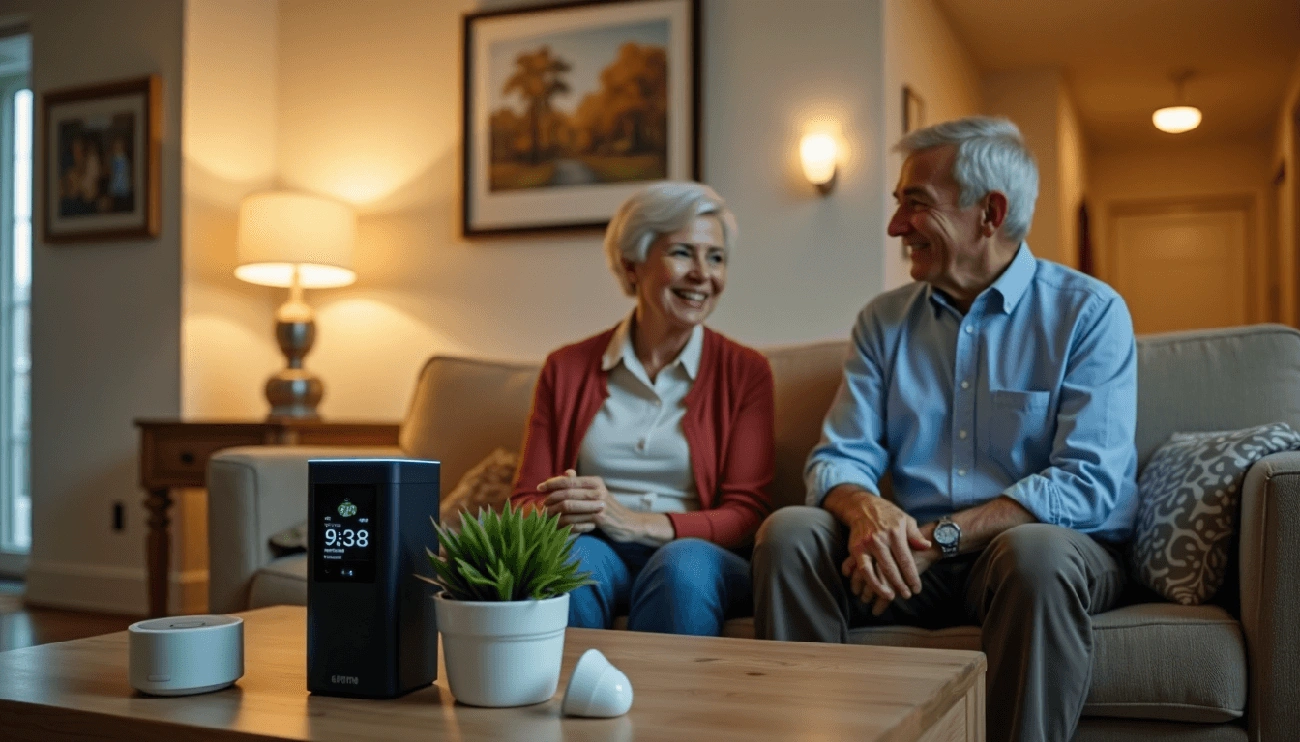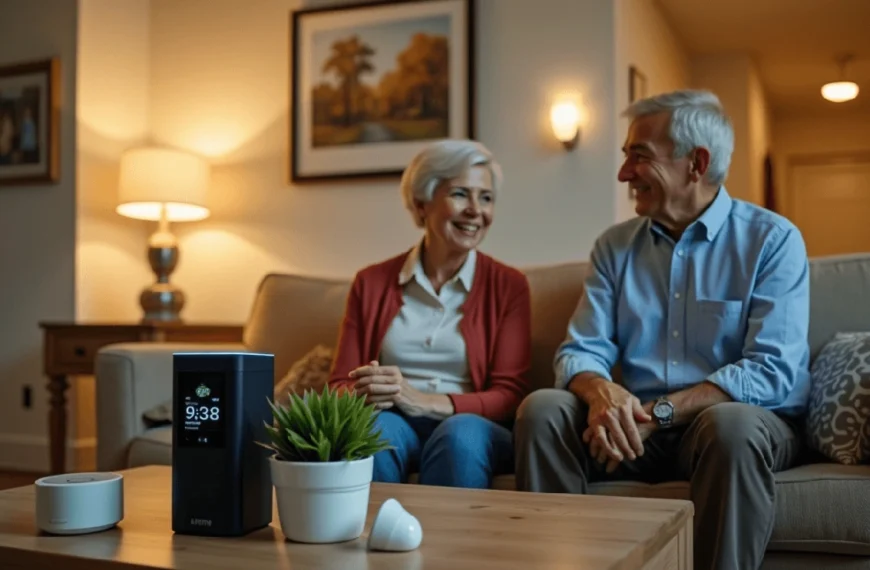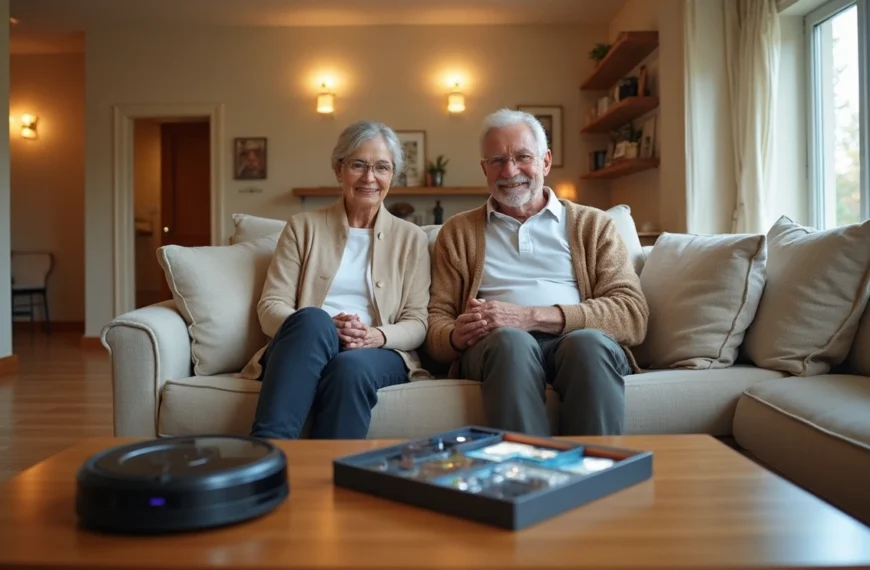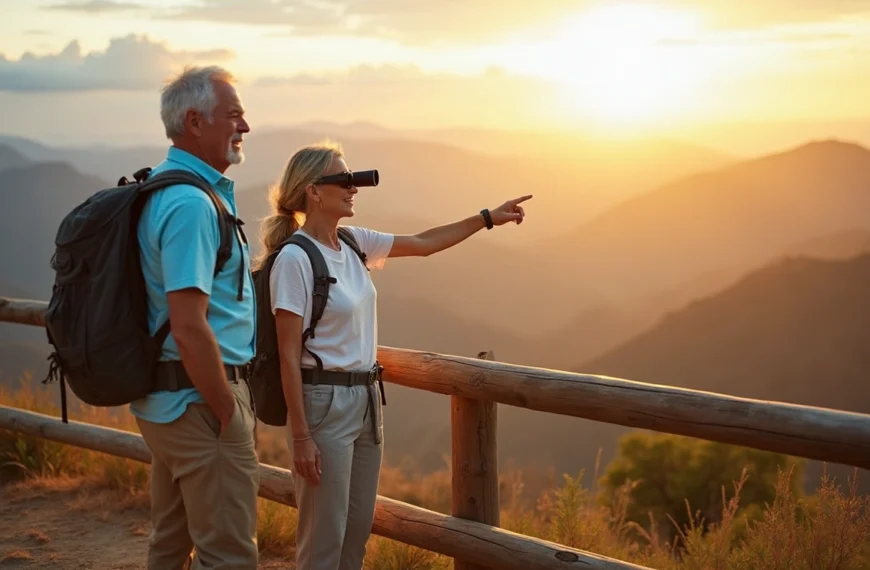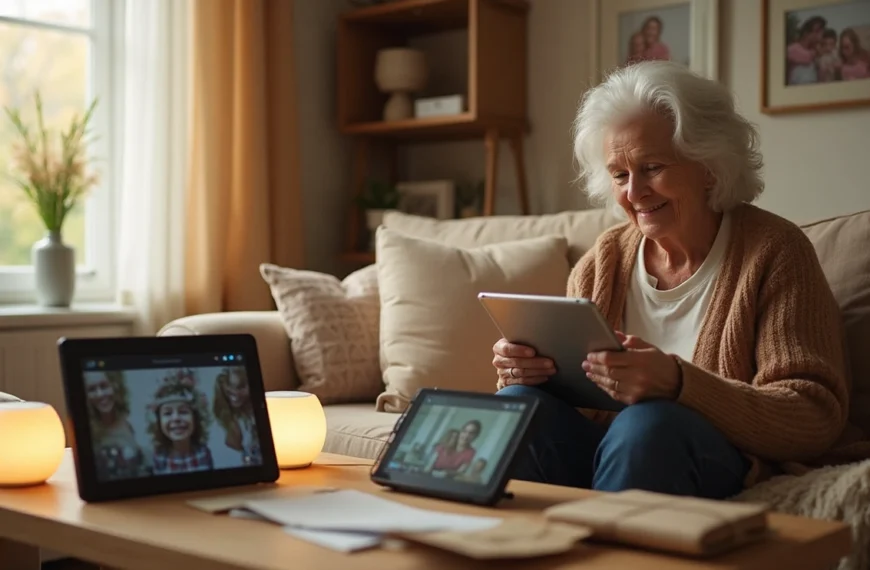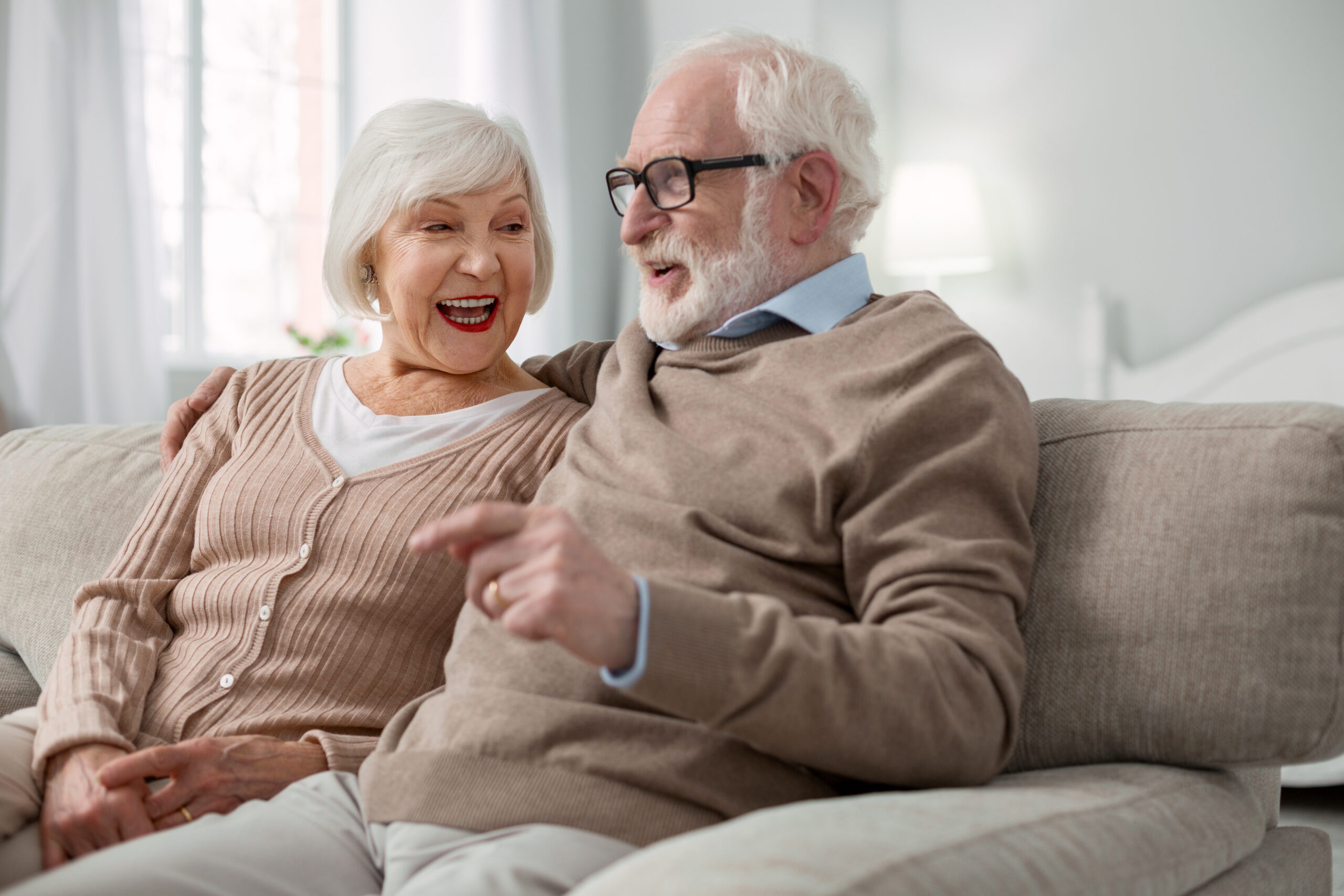Monitoring devices for seniors have become more important as America’s population ages faster. By 2030, 1 in 5 Americans will reach retirement age, which creates new challenges for families and caregivers. Seniors face serious safety risks and are 2.5 times more likely to die in a fire than others. But their need to stay independent remains strong, with almost 90 percent preferring to age in their homes.
The numbers tell a clear story: nearly 58 million Americans over 65 live in the US, and more than one in four of them falls each year. Elderly people often become targets for scammers who pretend to be utility companies, IRS agents, or even family members. Senior monitoring systems have grown beyond simple medical alerts into detailed smart home devices that handle multiple safety concerns. These technologies are a great way to get protection for elderly people living alone and give peace of mind to their families, especially when seniors travel or live by themselves. This piece gets into the best monitoring solutions you can find in 2025, their features, and how they help both seniors and caregivers stay safe while keeping their independence.
Why Monitoring Devices Are Essential for Seniors in 2025
Image Source: AARP
The digital world of aging Americans looks quite different today. 28 percent of older adults in the United States, about 13.8 million people, live by themselves. This independence means a lot to them, but it creates real challenges that monitoring devices can help solve.
Increased risks of living alone
Seniors who live independently face serious health risks. Studies show that people who feel lonely or isolated have higher chances of developing physical and mental health problems. These include high blood pressure, heart disease, obesity, anxiety, depression, cognitive decline, and even Alzheimer’s disease. Their bodies also change with age. They become less flexible, their bones get more brittle, muscles weaken, balance suffers, and reaction times slow down. These changes make accidents more likely.
Each year, one-third of American seniors fall, and about half of these falls that need hospital care happen at home. These numbers show why we need monitoring systems that can spot emergencies and get help fast.
Daily life gets harder too. Many seniors don’t deal very well with:
- Managing medications (90% take at least one prescription and 40% take five or more)
- Eating and drinking properly
- Keeping their homes clean
Rising crime and health emergencies
Safety threats go beyond health issues. A newer study, published in 2017, found that 1 in 6 people (15.7%) aged 60 years and older faced some kind of abuse in the last year. Law enforcement data shows that 50 percent of older victims of violent crime were hurt by family members.
Elder abuse has grown worse over the last several years. One US study suggests abuse rates in communities jumped by 84%. The global population of people aged 60 and above will reach 2 billion by 2050, and abuse victims could number 320 million.
The role of technology in independent living
Technology has become vital to help seniors live independently. Smart home devices like voice-activated assistants, doorbell cameras, motion sensors, and automated lighting systems make daily life safer and more convenient. These tools help seniors stay safe while they retain control of their environment.
Wearable devices like fitness trackers and smartwatches can check vital signs, monitor activity, and detect falls. They automatically contact family members or emergency services when needed. Telehealth platforms also make it easier to get medical care without leaving home.
Top 4 Monitoring Devices Every Senior Should Consider
Image Source: ADT
Technology today gives seniors practical ways to live independently and safely. Recent stats show that monitoring devices can substantially lower risks for older adults who live by themselves.
1. Smart security cameras with remote access
Security cameras let families keep an eye on their elderly loved ones remotely. Systems like Wyze cameras blend simple setup with shared access that makes monitoring easy. These small devices come with two-way audio, motion sensors, and night vision. Family members can check on their relatives whenever they feel worried.
The Wyze Cam v4’s compact size – just 2 inches square – makes it easy to place anywhere without drawing attention. Most systems deliver HD video quality, and some even offer 2.5K resolution for crystal-clear images. It’s worth mentioning that families should tell guests and caregivers about any cameras in the home.
2. Medical alert systems with fall detection
Falls impact 1 in 4 seniors yearly and lead to over 800,000 hospital visits. Medical alert systems with fall detection are a vital safety measure. Monthly costs run between USD 20-34, plus about USD 10 extra for fall detection features.
These devices employ accelerometers and barometric sensors to detect pressure changes – like someone moving from standing to lying down. A February 2025 survey revealed that 75% of people bought these systems after someone had a fall or medical emergency. Medical Guardian and LifeFone respond quickly (22-42 seconds) and offer battery life from several days to 10 days.
3. Smart door locks and entry sensors
Smart door locks have revolutionized senior security. Strong encryption protects against break-ins, and seniors no longer need physical keys that they might misplace. Keycards, fingerprint scans, or smartphone apps make access simple for seniors with memory or mobility challenges.
These locks track who comes and goes from the home live. Emergency responders can get inside quickly without needing physical keys – a feature that could save lives. The Lockly Vision Elite helps seniors see visitors before opening their door, which adds extra security.
4. Environmental hazard detectors (smoke, CO, temperature)
Environmental monitoring adds another layer of protection for elderly homes. Advanced detectors that track smoke, carbon monoxide, and temperature extremes boost overall safety. Alarms and mobile alerts ensure quick responses to potential dangers.
Natural gas detectors spot leaks early, which helps seniors feel more confident living on their own. Smart smoke detectors now offer remote monitoring capabilities. Some systems can even notice unusual quiet periods in rooms, which adds another safety check for seniors living independently.
Key Features to Look for in Senior Monitoring Systems
Image Source: GrandCare Systems
The right monitoring technology needs features that boost both safety and independence for seniors. Here are some significant elements you should consider when looking at senior monitoring options.
Ease of use and accessibility
Senior-friendly monitoring systems need user-friendly designs with large buttons, clear displays, and simple operation. Residents can trigger emergency alerts instantly with wearable devices like pendants and wristbands. A simple button press lets you test the best systems quickly to check if they work properly.
Professional vs. DIY installation
DIY setups usually cost less initially, but professional installation provides customized protection based on your home’s layout and specific weak points. You can set up DIY systems in 30 minutes to two hours. Professional technicians take care of everything from planning to equipment setup—usually in less than a day. Seniors with complex needs benefit from professional installation that ensures perfect placement without blind spots.
Voice assistant compatibility (Alexa, Google Home)
Voice-activated assistants help seniors avoid complex menus and forgotten passwords. About 29% of adults ages 50 and over now use digital assistants. These systems set medication reminders, make hands-free calls, control smart home devices, and provide companionship through conversation.
Battery backup and cellular connectivity
Quality systems come with backup batteries that last 30-32 hours during power outages. Continuous connection through cellular networks removes the need for landlines while keeping monitoring active. Mobile pendants offer battery life ranging from one day to 10 days.
Emergency response integration
Quality monitoring systems connect to professional monitoring centers that operate 24/7 with trained staff. Response times average between 22-42 seconds. Many centers keep your critical medical information ready to provide responses tailored to your specific needs.
How Monitoring Devices Support Caregivers and Families
Family caregivers face many challenges as they provide ongoing support. Monitoring devices create a reliable safety net that works when caregivers can’t be there in person.
Live alerts and mobile notifications
Modern monitoring systems link directly to smartphones and give families instant updates about potential problems. Caregivers can use companion apps to get push notifications about emergencies, check system battery levels, and update emergency contacts. These apps let users choose which clinical alerts and keywords matter the most. Many systems track location live and store location history for up to 30 days.
Two-way communication features
These systems do more than just handle emergencies. Quality devices come with audio features that let caregivers talk directly to seniors through their monitoring device. Daily check-ins and quick responses to concerns are a great way to get peace of mind. Some systems merge with voice assistants like Alexa to make communication smooth.
Activity tracking and wellness checks
Monitoring systems do more than respond to emergencies – they track vital health metrics and daily routines. The devices detect pattern changes in bathroom visits, sleep schedules, and medication use. Caregivers get alerts about potential issues before they become serious problems. This data helps families make smart choices about lifestyle changes that improve well-being.
Privacy considerations and consent
The benefits are clear, but privacy remains the biggest concern. Almost 40% of respondents in one survey called privacy their top worry about remote monitoring. Seniors worry about surveillance, how their data might be used, and potential confidentiality breaches. Building trust happens through clear consent processes and giving seniors control over their data collection.
Conclusion
The number of aging Americans keeps growing faster, and monitoring devices have become vital tools to keep seniors safe while helping them stay independent. More than 13.8 million older adults live alone and face many challenges – from falling risks to health emergencies and security threats.
Remote visual monitoring and two-way communication through smart security cameras give families peace of mind. Medical alert systems with fall detection provide vital protection against injuries that commonly affect seniors. Smart door locks solve problems with keys and let caregivers track entries in real time. Environmental hazard detectors complete the safety system by warning seniors and caregivers about life-threatening situations.
These systems work best when chosen carefully based on individual needs. The core features should include accessible interfaces, continuous connection, and emergency response integration. Power outages won’t interrupt protection thanks to battery backup, and voice assistant compatibility makes daily use simple for seniors with limited mobility.
Families can stay connected with their loved ones through these technologies that go beyond emergency response. Live alerts, activity tracking, and two-way communication help maintain close relationships even across long distances. Privacy remains a valid concern, but seniors can maintain their dignity through transparent consent and control over their data.
These monitoring devices have become more than just safety equipment – they represent independence for aging adults. Seniors can live life on their terms while their families know help is moments away if needed. Technology keeps advancing, and without doubt these systems will become even more important in supporting America’s seniors who want to age safely in their homes.
FAQs
Q1. What are the most essential monitoring devices for seniors in 2025? The most essential monitoring devices for seniors include smart security cameras with remote access, medical alert systems with fall detection, smart door locks with entry sensors, and environmental hazard detectors for smoke, carbon monoxide, and temperature.
Q2. How do monitoring devices support caregivers and families? Monitoring devices support caregivers and families by providing real-time alerts and mobile notifications, enabling two-way communication, tracking daily activities and wellness, and offering peace of mind when they can’t be physically present with their senior loved ones.
Q3. What key features should I look for in a senior monitoring system? Key features to look for include ease of use and accessibility, voice assistant compatibility, battery backup, cellular connectivity, and integration with emergency response services. Professional installation may also be beneficial for more complex setups.
Q4. Are there privacy concerns with senior monitoring devices? Yes, privacy is a significant concern. It’s important to address these issues through transparent consent processes, giving seniors control over data collection, and ensuring that all parties are aware of the monitoring in place. Nearly 40% of seniors cite privacy as their top concern regarding remote monitoring.
Q5. How effective are medical alert systems with fall detection? Medical alert systems with fall detection are highly effective in protecting seniors. They can detect falls using accelerometers and barometric sensors, and quickly alert emergency services. These systems have response times ranging from 22-42 seconds and can significantly reduce the risk of prolonged immobility after a fall.

